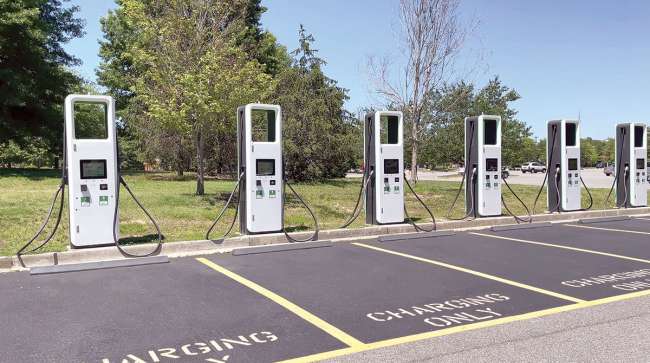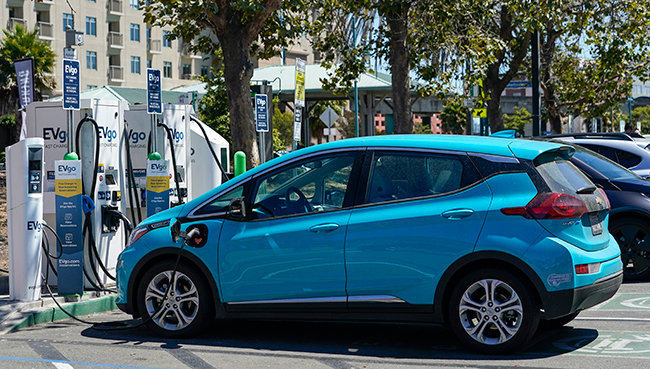Associated Press
California Moves Toward Phasing Out New Gas-Fueled Vehicles

[Stay on top of transportation news: Get TTNews in your inbox.]
SACRAMENTO, Calif. — California plans to require all new cars, trucks and SUVs to run on electricity or hydrogen by 2035 under a policy approved Aug. 25 by regulators that seeks a dramatic cut in carbon emissions and an eventual end to gasoline-powered vehicles.
The decision by the California Air Resources Board came two years after Gov. Gavin Newsom first directed regulators to consider such a policy. If the goal is reached, California would cut emissions from cars in half by 2040. The air board is working on separate emissions rules for motorcycles and diesel trucks.
The move gives the most populous U.S. state the world’s most stringent regulations for transitioning to electric vehicles. It is expected to prompt other states to follow California’s lead and to accelerate the production of zero-emission vehicles by automakers.
Board member Daniel Sperling, founding director of the Institute of Transportation Studies at the University of California, Davis, called the vote “the most important and transformative action” the air board has ever taken.
The policy still needs federal approval but that’s considered very likely under Democratic President Joe Biden’s administration. It allows Californians to keep driving gas-powered vehicles and buying used ones after 2035, but no new models would be sold in the state.

Electric vehicles charging at a shopping center in Emeryville, Calif. (Godofredo A. Vásquez/Associated Press)
One-fifth of automakers’ sales after 2035 could be plug-in hybrids, which run on batteries and gas, but the rest must be powered solely by electricity or hydrogen.
The European Parliament in June backed a plan to effectively prohibit the sale of gas and diesel cars in the 27-nation European Union by 2035, and Canada has mandated the sale of zero-emission cars by the same year.
California climate officials say the state’s new policy is the world’s most ambitious because it sets benchmarks for ramping up electric vehicle sales over the next 13 years.
The first mandated threshold comes in 2026, when one-third of all vehicles sold in the state must be zero-emission. Automakers could be fined $20,000 per vehicle sold short of that goal.
About 16% of cars sold in California in the first three months of this year were electric.
Washington state and Massachusetts already have said they will follow California’s lead and many more are likely to — New York and Pennsylvania are among 17 states that have adopted some or all of California’s tailpipe emission standards that are stricter than federal rules.
Kia Corp.’s Laurie Holmes said the company plans to spend $25 billion by 2025 on electric vehicles and hopes to offer seven models by 2027.
But she and several other representatives for auto companies expressed concern about the state’s timeline given factors such as supply chain challenges and the high cost of materials to build electric cars.
“Automakers could have significant difficulties meeting this target given elements outside of the control of the industry,” she said.
The switch from gas to electric cars will drastically reduce emissions and air pollutants. Transportation is the single-largest source of emissions in the state, accounting for about 40% of the state’s greenhouse gas emissions. But the transition will be painful for the state’s oil industry. California remains the seventh-largest oil-producing U.S. state, though its output is falling as it pushes forward with climate goals.
California shouldn’t wrap its entire transportation strategy around a vehicle market powered by electricity, said Tanya DeRivi, vice president for climate policy with the Western States Petroleum Association, an oil industry group.
Want more news? Listen to today's daily briefing above or go here for more info
“Californians should be able to choose a vehicle technology, including electric vehicles, that best fits their needs based on availability, affordability and personal necessity,” she said.
California is the nation’s most populous state, with about 39 million people. They account for 10% of the U.S. car market but have 43% of the nation’s 2.6 million registered plug-in vehicles, according to the air board.
Reaching the 100% goal by 2035 will mean overcoming very practical hurdles, notably enough reliable power and charging stations.
California now has about 80,000 stations in public places, far short of the 250,000 it wants by 2025. The Alliance for Automotive Innovation, which represents many major car makers, warned about the lack of infrastructure, access to materials needed to make batteries, and supply chain issues as being among the challenges to meeting the state’s timeline.




